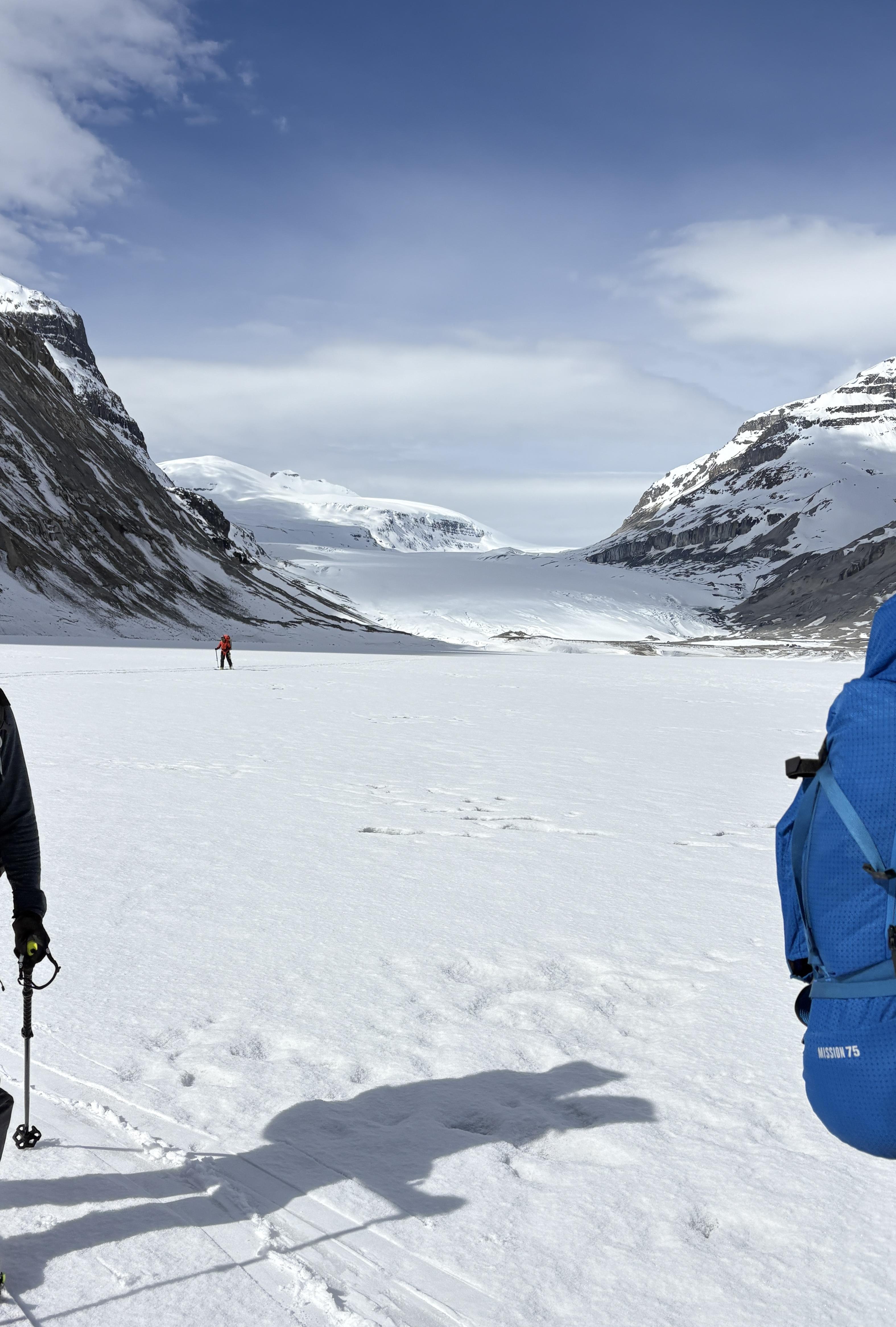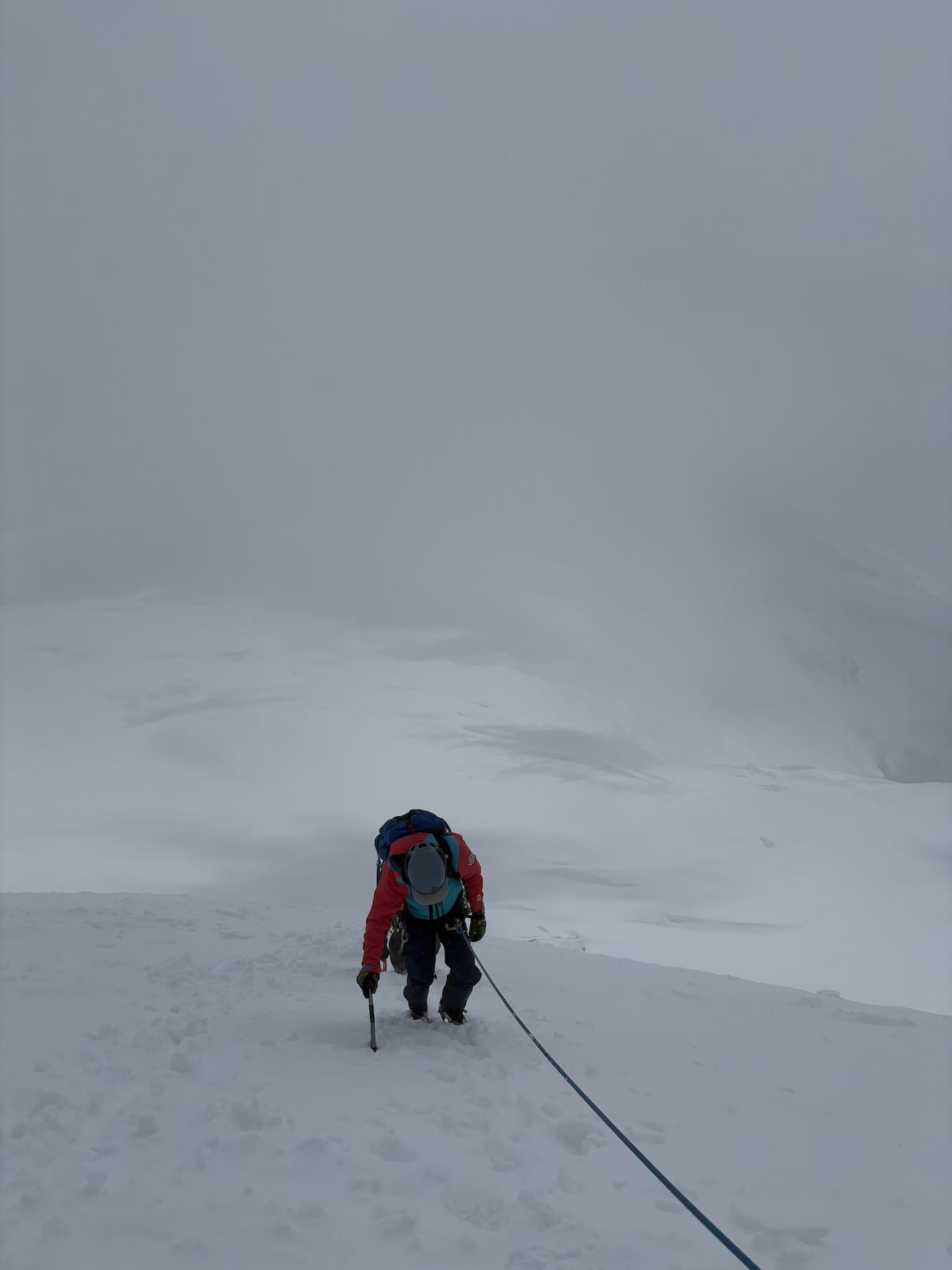I guided four private guests on Mt. Columbia from April 26–28 through Yamnuska Mountain Adventures.
Weather Summary
Mixed sun and cloud, with a few cm of new snow from convective activity.
Temperatures: High of +1°C, low of -13°C at 2900 m (top of the icefield).
Light to moderate NW winds.
Moist snow observed below 2700 m.
Athabasca Glacier Approach
Snowpack (HS): 50–150 cm.
The serac on snow dome side between the 2nd and 3rd icefalls appears quite active.
Steep overhead terrain with wind-affected snow on Andromeda side and one natural size 2 icefall observed crossing an old skin track.
Numerous open crevasses throughout the glacier.
Minimum conditions for safe travel: At least good visibility, Good overnight freeze, Roped glacier travel with a group of 4 or more people strongly recommended.
Recommendation: Consider using the Saskatchewan Glacier approach or hiring an ACMG-certified guide.
Saskatchewan Glacier Approach
Supportive crust present down to the toe of the glacier until approximately 11 a.m.
Snowpack (HS): 50–150 cm.
Fewer signs of sags or crevasses, except at the toe and near the top of the glacier.
More straightforward glacier travel with easier skiing conditions.
Descent from the top of the icefield took approximately 4 hours.
Required carrying skis in a few areas near the toe.
Mt. Columbia
Snowpack (HS): Average 200–250 cm, with some areas exceeding 300 cm.
Overall, good glacier travel conditions.
The bergschrund remains small and is currently easy to cross.
Good climbing conditions: Mid-shin boot penetration all the way to the summit.
Afternoon conditions in the Columbia Trench included a breakable crust.


